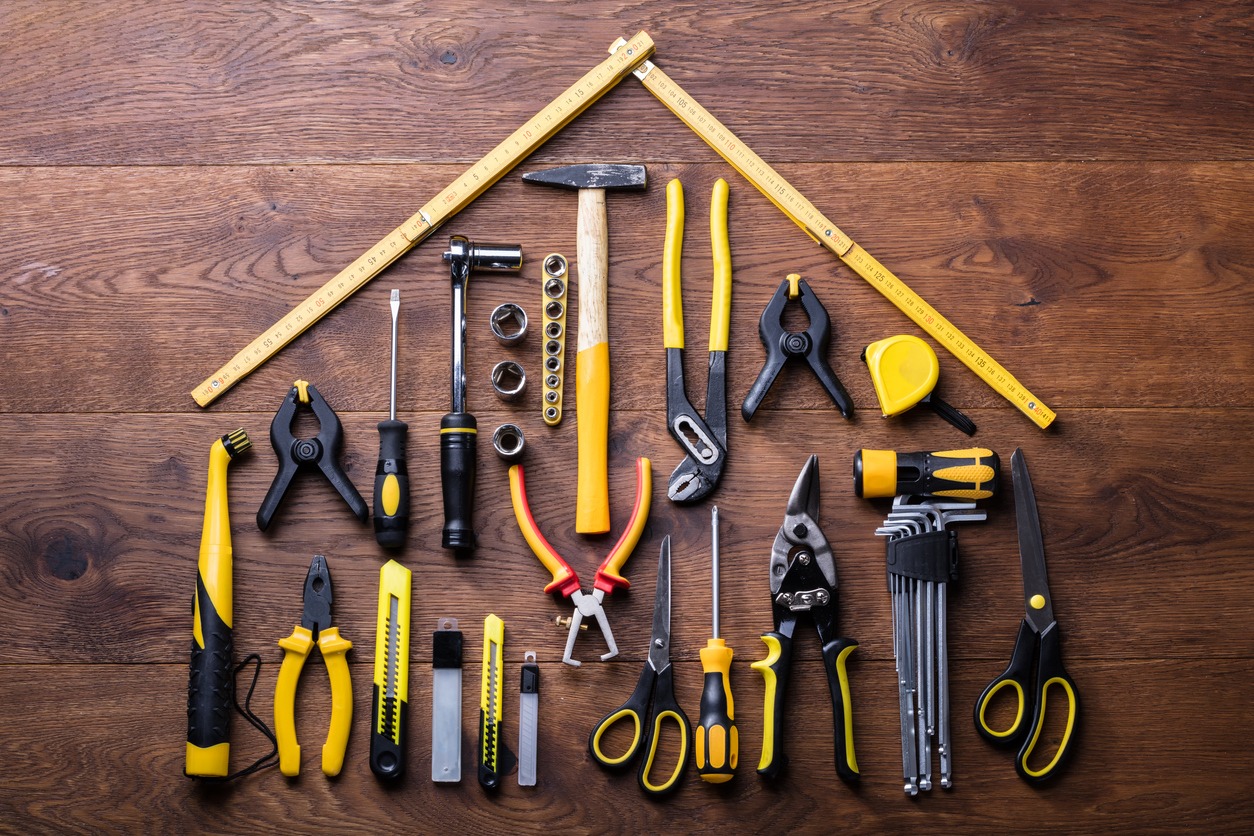People must work for a living in our hectic environment. The modern workplace demands creativity. Your work life is more fun when you are creative. As far as woodworking is concerned, it is always fun due to its creative aspect. Beautiful handcrafted furniture and other objects come in all shapes and sizes and crafting them by hand can bring you great joy.
The appropriate equipment may make a task easier than ever to complete, and if you’re considering woodworking, there are a ton of high-quality instruments available to help. These various types of equipment and accessories help to improve the accuracy, efficiency, and simplicity of woodworking. They are perfect for both amateur and expert crafters. At least initially, some of the accessories listed below might not be required. However, they will unquestionably simplify your work and are certain to become a vital tool in your workplace.
1. Square Awl: Awls are instruments for making holes in many materials, including leather, wood, and others. They have been used since antiquity and frequently have a tiny thread hole built right in. An awl’s function is to penetrate a substance without leaving a cut line. You now have a usable hole that you may use to grommet, stitch, or hang something from. Awls are particularly familiar to leather artisans because they are frequently used in place of a needle and thread. They can create a row of sewing holes with the help of the awl, which they can then use to thread a thick leather cord or another sturdy material through.
Awls are designed to pierce materials, and they excel at this task. If you’ve ever needed to make a hole in your belt, you may have discovered that a knife makes a terrible replacement for a quality metal punch. Any knife’s tip will frequently break off or chip when too much power is applied to it because it is the blade’s weakest point. It is challenging to cut a hole that is a practical size due to the blade’s breadth. Awls are substantially thinner and much thicker than typical knife blades. They are excellent at resisting intense downward pressure and can easily cut through dense materials.
2. Screwdriver: To tighten screws that get loose or require replacement, every home should have at least one of the more common screwdriver models. The little, specially crafted tip of a screwdriver magnifies the hand’s twisting motion to the screw’s head. The two most popular tip styles for specialized applications are standard, also known as flat, flared, or straight, and Phillips tips.
3. Retractable Tape Measure: A tape measure is a long ruler that can be bent and folded up, so it may be stored in a case and taken with us wherever we go. When we require a portable long-range ruler, it helps us solve a problem. That is why individuals who need measurements frequently use tape measures including carpenters, builders, and woodworkers.
In essence, it’s not very complicated how a tape measure works. It simply relies on the lock and spring mechanism, which are its two main components. When you extend the tape, the lock button acts in a way that prevents it from retracting. The motorized roller to retract the tape uses a spring mechanism. In reality, a tape measure’s spring mechanism is made of a long, flat coil of metallic material. Steel is frequently able to provide springiness, albeit not all metallic materials can. The spring characteristic, which is utilized to retract your tape automatically, will increase as you pull the tape out.
4. Steele Rule: Simple measuring tools like steel rules are used to determine distances and govern straight lines. It is utilized in many different industries, including carpentry, engineering, technical drawing, and geometry. One often used measuring device is the steel rule. The Encyclopedia of Alternative Energy states that flat steels often have a length of 6 to 12 inches. The width of these steel rules, which can be either flexible or stiff, determines the precision of measurement. Division marks on thin rules are closer to the object being measured, making them more accurate for measurements. A steel rule is used to measure distances and govern straight lines in geometry, technical drawing, engineering, and construction. This is used to measure lengths instead of a plastic ruler because plastic can easily break while working with wood and equipment.
5. Mechanical Pencil: Although there are many different tools and equipment needed for woodworking, a decent carpenter pencil should never be undervalued. Simple as it may seem, carpenters, use the best pencil for the job to record precise dimensions or designs. This is why a lot of people think mechanical pencils are at least good-marking woodworking instruments. Some people go so far as to say that mechanical pencils are the ideal choice because of their durability, which is a quality that is uncommon for an ordinary pencil.
6. Universal Wrench: One of the best power tool accessories to keep on hand at all times is a universal wrench. Any nut or bolt can be tightened or loosened using a universal wrench. With this wrench, you can even grab damaged or stripped nuts. You won’t need to move between several sockets to locate the right one because this attachment will adapt to any shape of the nut or bolt you’re working with and loosen it.
7. Drill Bits: In a variety of occupations, drills and drilling equipment are used to bore round holes. The drill is the name of the device used to create the boring hole. Drill machine refers to the device used to move the drill. Drilling is the process of creating holes with drills and drill machines. An instrument for cutting, a drill bit is used to create or enlarge holes in solid metal. These are utilized with a drill press or manual drill that has a chuck. The clamp on these drilling machines is adjusted with a key. A drill is one of the top workshop tools and is necessary for practically any project. However, you can’t use any drill unless you know which drill is best for your task. There are many different sizes available for drill bits.
8. Clamps: One of the fundamental tools required for woodworking tasks is a clamp. One of the subtlest tools you can discover is this one. But making a single wooden object without utilizing a clamp of some kind is practically impossible. Clamps come in quite handy when trying to attach two pieces of wood. There’s a saying in the woodworking community that you can never have too many clamps. The kind of clamp you should choose depends on several factors, including the size and shape of the workpiece, the intended clamp pressure, and the joint angle.
9. Tool Storage: Once you’ve started to amass several tools, both hand, and power, you’ll need somewhere to keep them when not in use. You must create a system that works for your shop layout whether you choose to construct a cabinet with cupboards and drawers or just a shelving system to store them out of the way.
10. A Portable Shop Table: A sizable work table is most likely the next best shop tool. Utilizing a moveable table that can be moved throughout the store as necessary is advised. The casters on this particular table are retractable and it is lightweight but durable. Lifting each end of the table will cause the casters to lock into position, allowing you to easily move the table. Pull the cords on each end of the table after it is in place to retract the casters and keep the table in place.
Several shop accessories are not only beneficial but, in some circumstances, absolutely vital, even though every new woodworker prioritizes his or her budget on the woodworking tools required to outfit the shop. Be sure to carefully evaluate your project and consider what the best option will be for your needs.

